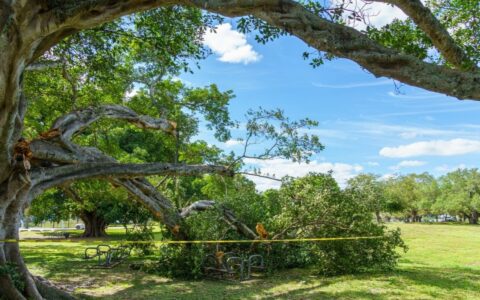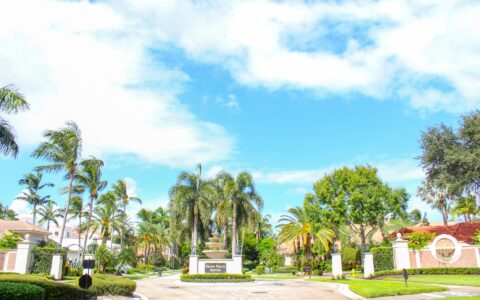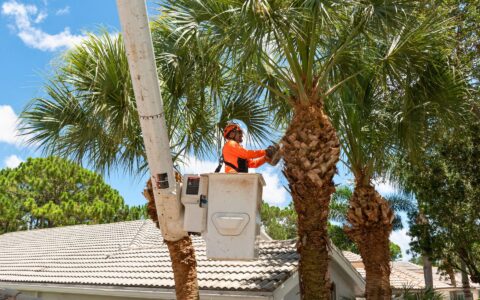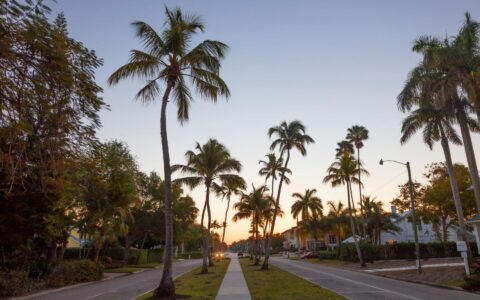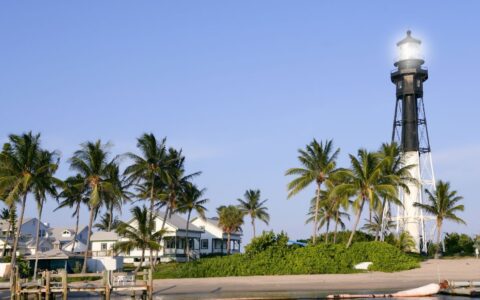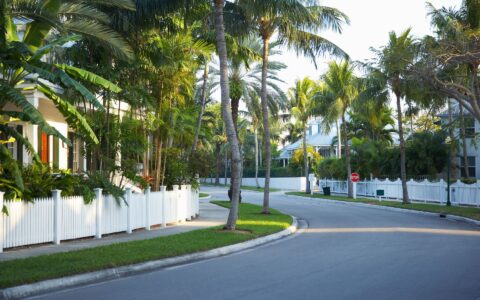In South Florida, ensuring the health and vitality of your trees is crucial due to the unique climate and diverse range of pests and diseases. Regular tree inspections play a vital role in the early detection and treatment of potential issues, and by proactively addressing pests, diseases, and damage, South Florida property owners can:
- Keep their trees pest and disease-free
- Protect their property investment
- Maintain the beauty of their landscapes
This article explores the importance of tree inspections, common issues in South Florida, and the benefits of early intervention.
Key Takeaways
- Regular tree inspections in South Florida are important to address storm-related damage and ensure the safety of your property.
- Regular inspections can help catch pests, diseases, and damage early on, protecting the beauty and value of your property.
- Early identification of pest infestations through inspections prevents further spread and preserves the overall health of your trees.
- Regular inspections aid in identifying and treating tree diseases, preserving the vitality of your trees, and reducing the risk of disease spread
Importance of Regular Tree Inspections
Regular tree inspections are important because they can help identify and address any potential pests, diseases, or damages in South Florida. Trees and palms are a valuable asset to any property, providing shade, beauty, and environmental benefits. However, they are also susceptible to various threats that can weaken or even kill them if left untreated.
One of the main reasons regular tree inspections are crucial is to detect and prevent the spread of pests. In South Florida, trees can be infested with insects like beetles, aphids, or borers, which can cause significant damage. If these pests are not detected early on, they can multiply rapidly and devastate entire trees or even entire landscapes. Regular inspections allow arborists to identify any signs of infestation and take appropriate measures to control and eradicate them.
Diseases are another major concern for trees in South Florida. Fungal infections, such as root rot or leaf spot, can weaken trees and make them more susceptible to other problems. Regular inspections can help arborists identify early signs of disease, such as discolored leaves or unusual growth patterns, and take necessary steps to prevent further spread. Timely treatment can save infected trees and prevent the disease from spreading to other healthy trees in the vicinity.
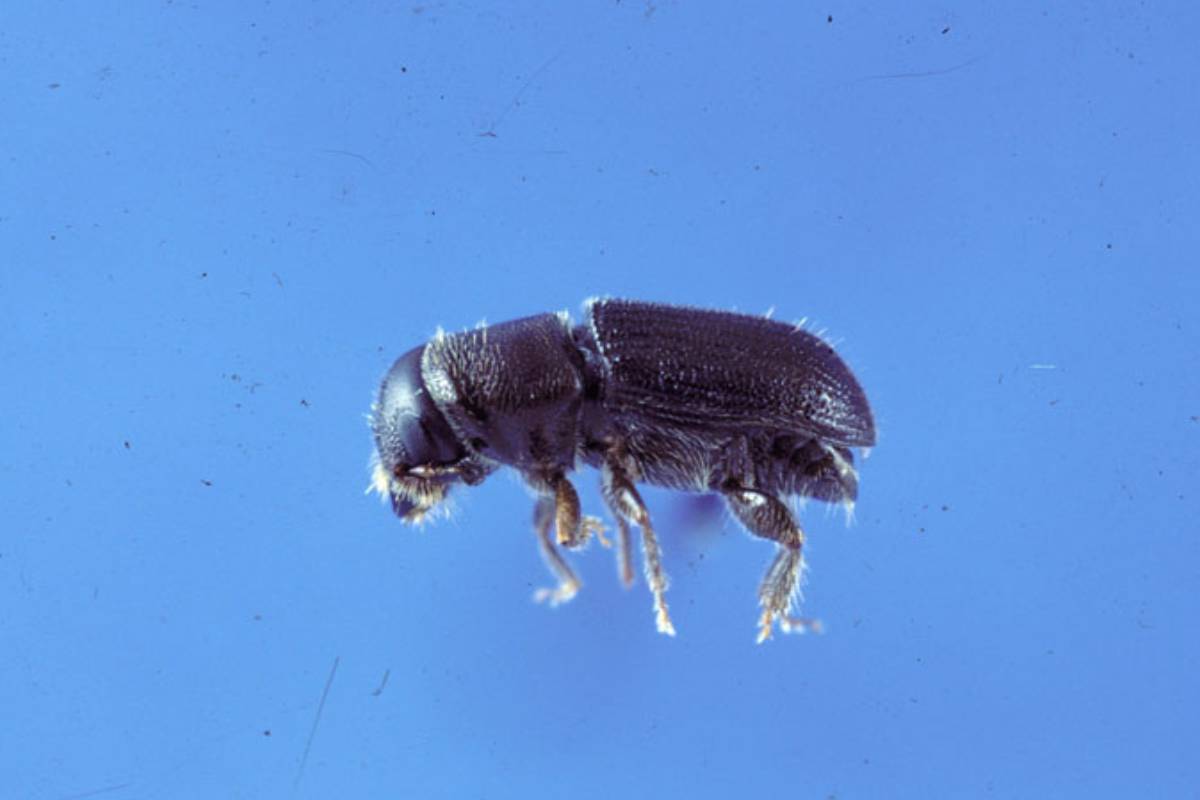
The pine beetle is a major pest throughout South Florida. Photo used courtesy of Gerald J. Lenhard, Louisiana State University, Bugwood.org.
Common Pests and Diseases in South Florida
One way to get a jump on potential pest issues is to familiarize yourself with the common pests and diseases that can affect trees in South Florida. In this region, trees are vulnerable to a variety of pests and diseases that can cause significant damage if left unchecked.
One common pest is the South Florida Pine Beetle, which attacks pine trees and can quickly kill them. These beetles bore into the tree, disrupting the flow of nutrients and water, ultimately leading to the tree’s demise.
Another common pest is the Rugose Spiraling Whitefly, which affects palm trees. These tiny insects feed on the leaves, causing yellowing, wilting, and eventually death if not treated promptly. You can read more about the whitefly in our profile article here.
In addition to pests, trees in South Florida are also prone to various diseases. One prevalent disease is Ganoderma Butt Rot, caused by a fungus that attacks the lower trunk and roots of palms. This disease weakens the tree’s structure, making it susceptible to wind damage and ultimately leading to its death.
Another disease is the Citrus Canker, which affects citrus trees. This bacterial infection causes raised corky lesions on the leaves, stems, and fruit, leading to defoliation and loss of fruit production.
Regular tree inspections are crucial in identifying and addressing these pests and diseases. Early detection and inspection by a certified arborist can prevent further spread and save the tree from irreversible damage. They can also advise on preventative measures, such as proper pruning techniques and maintaining tree health.
Benefits of Early Detection and Treatment
1. Saving Money on Costly Tree Removal
To save money, you should consider getting your trees inspected for pests, disease, and damage in Broward, Miami-Dade, and Palm Beach counties. By identifying and treating any issues early on, you can prevent costly tree removal in the future. Here are three ways in which inspecting your trees can help you save money:
- Preventing property damage: Regular inspections can detect weak or diseased branches that could potentially fall and cause damage to your property. By removing these branches early on, you can avoid expensive repairs.
- Avoiding tree removal: If a tree is severely infested or diseased, it may need to be removed. By catching these issues early, you can potentially save the tree through treatment rather than having to pay for its removal.
- Preserving tree health: Regular inspections and treatments can help maintain the overall health of your trees, reducing the risk of them becoming vulnerable to pests, disease, or damage. Healthy trees are less likely to require costly interventions in the long run.
2. Preserving the Health and Longevity of Your Trees
Regular inspections and treatments can help maintain the overall health of your trees, reducing the risk of them becoming vulnerable to costly interventions in the long run. By identifying and addressing any potential issues early on, you can preserve the longevity of your trees and save yourself from the expense of removing and replacing them.
Pests, diseases, and damage can all take a toll on your trees, impacting their growth and structural integrity. Through regular inspections, arborists can detect signs of infestation or disease, allowing for timely treatments that can prevent further damage. Additionally, inspections can identify any structural issues or weaknesses that may pose a risk to the tree’s stability.
By addressing these issues promptly, you can ensure that your trees remain healthy and strong, enhancing the beauty and value of your property.
3. Protecting the Beauty and Value of Your Property
Preserving the beauty and value of your property can be achieved by ensuring the health and longevity of your trees through regular inspections and timely treatments.
Trees are not only aesthetically pleasing, but they also add value to your property. However, they can be susceptible to various pests, diseases, and damage, especially in South Florida’s unique climate.
By having your trees inspected for these issues, you can prevent potential problems from escalating and causing irreversible damage. Prompt identification and treatment of pests and diseases can help maintain the beauty and health of your trees, ensuring they continue to enhance your property’s overall appeal.
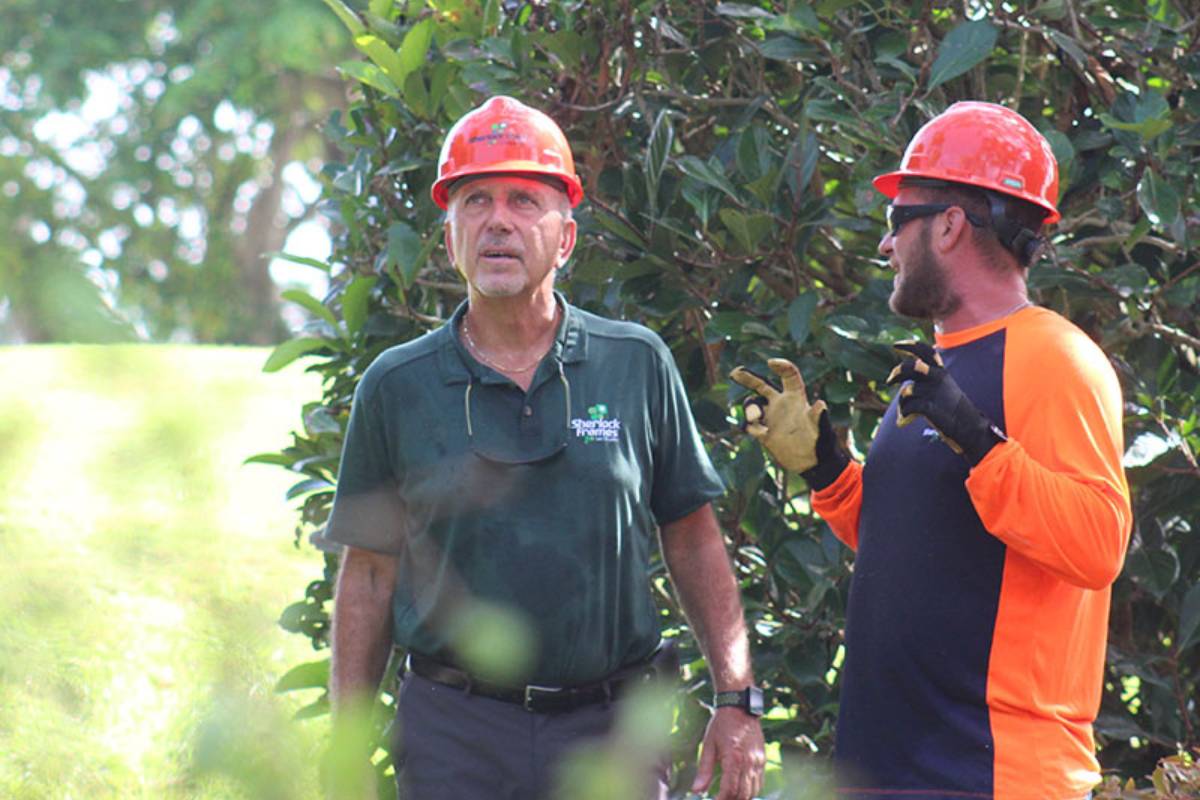
At Sherlock Tree, assessment and inspection is an important part of assessing tree and palm health.
Scheduling Regular Tree Inspections
Scheduling regular tree inspections is important to ensure the health and safety of your trees in South Florida. By having your trees inspected on a regular basis, you can catch any potential issues early on and prevent them from causing further damage.
In a warm climate like South Florida, where pests, diseases, and storms are common, it is crucial to stay proactive in maintaining the beauty and value of your property. So, don’t wait for problems to escalate – be proactive and schedule regular inspections to keep your trees thriving.
Frequently Asked Questions About South Florida Tree Inspections
How often should I have my trees inspected for pests, disease, and damage in South Florida?
Trees in South Florida should be inspected for pests, disease, and damage regularly. It is recommended to have them inspected at least once a year by a professional arborist.
Regular inspections help identify potential issues early on, preventing further damage and allowing for prompt treatment. This ensures the health and longevity of your trees, preserving the beauty of your landscape and avoiding costly tree removal or replacement in the future.
Can I inspect my own trees, or should I hire a professional for the job?
Inspecting trees for pests, disease, and damage in South Florida can be a complex task, requiring knowledge and expertise. While homeowners may attempt to inspect their own trees, hiring a professional is highly recommended.
Professionals have the necessary training to identify potential issues that may go unnoticed by the untrained eye. Their experience allows for a more accurate assessment and appropriate treatment, ensuring the health and longevity of your trees.
What are some signs or symptoms that indicate my trees may have pests or diseases in South Florida?
Signs or symptoms that may indicate tree pests or diseases in South Florida include:
- Wilting or yellowing leaves
- Leaf spots or discoloration
- Holes or tunnels in the trunk or branches
- Unusual growths
- The presence of pests such as aphids, scales, or borers
Other signs of pests or diseases include:
- Premature leaf drop
- Dieback of branches
- The presence of fungal growth at the base or out of the trunk
If you notice any of these signs, it’s recommended to have a professional tree inspection to accurately diagnose and treat the problem.
Are there any specific pests or diseases that are more common in certain types of trees in South Florida?
Certain types of trees in South Florida are more prone to specific pests and diseases. For example, citrus trees are often affected by diseases like citrus greening, while palm trees are susceptible to pests like the palm weevil. Other common pests in the area include whiteflies, scales, and mites.
Identifying these specific issues early on is crucial for effective treatment and prevention. Regular tree inspections can help catch these problems before they cause significant damage or spread to other trees in the area.
What are the potential consequences of not having regular tree inspections in South Florida?
Not having regular tree inspections in South Florida can lead to serious consequences. Without inspections, pests, diseases, and damages may go unnoticed, causing further deterioration of the trees.
Infestations can spread, leading to the death of the trees and potentially affecting nearby vegetation. Diseases can also spread and harm the overall ecosystem.
Moreover, damaged trees can pose safety risks, as weakened branches or trunks may fall unexpectedly, endangering people and property.
One Last Word on Tree Inspections
It’s highly recommended that individuals in South Florida have their trees inspected regularly for pests, disease, and damage. By doing so, they can ensure the health and longevity of their trees, as well as prevent the spread of harmful pests and diseases.
Early detection and treatment are crucial in maintaining the overall well-being of trees. Scheduling regular tree inspections can help identify any issues before they become severe. Call Sherlock today at
Do You Need an Inspection to Help Protect Your South Florida Property?
Call Sherlock Tree Today at 954-788-4000 to schedule a tree assessment. Our professional team has the knowledge and skill to identify and diagnose any tree problem. You can trust South Florida’s best! Proudly serving Broward, Palm Beach, and Miami-Dade counties since 1974!
Call Sherlock for quality tree services
Whether you're looking for specific tree care services, such as palm trimming, tree removal, or disease treatments, or would like one of our Arborists to examine your trees to identify any issues and recommend options, we're always here for you! Just give us a call at 954-788-4000 to set up an appointment.
SEE MORE ARTICLES
Looking for more?
We've got you covered with a monthly newsletter full of tips, resources, updates, how-to's, and other helpful information about trees and landscapes in South Florida!


